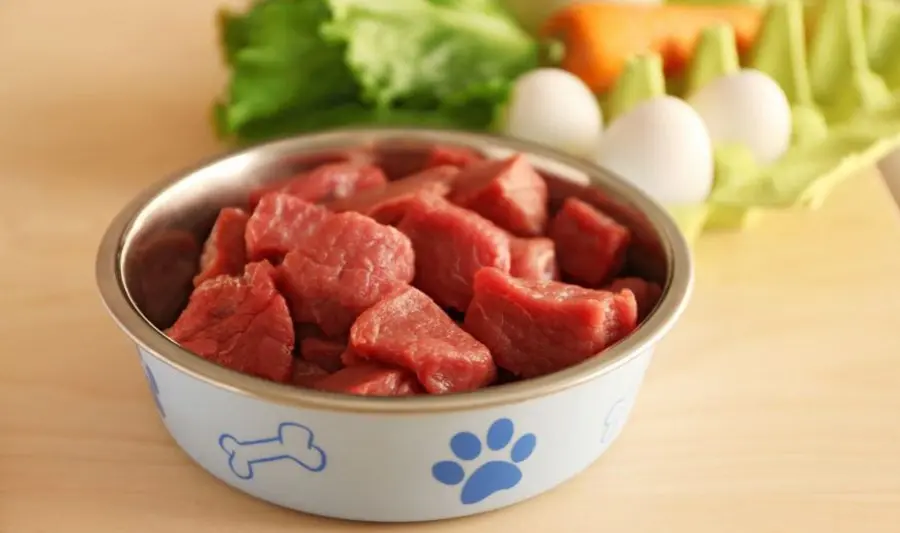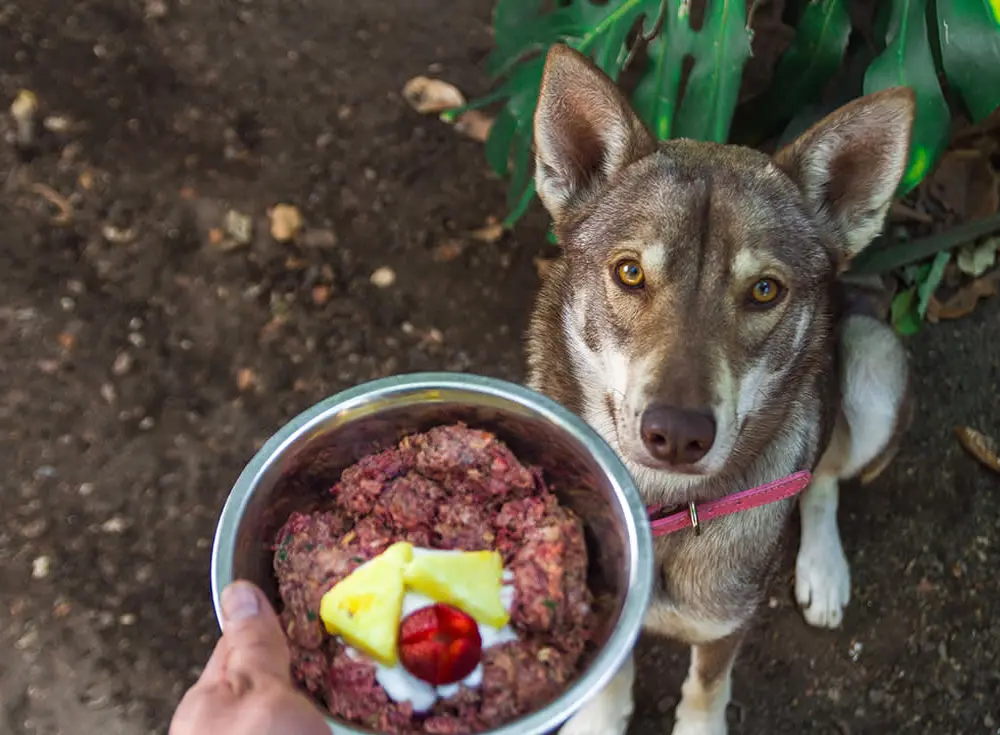Are raw diets safe and healthy for dogs?

Introduction
A. Definition of raw diets for dogs
Raw diets for dogs consist of uncooked ingredients like meat, bones, and organs. These diets avoid processed foods and aim to mimic what dogs might eat in the wild.
B. Popularity and trends in feeding raw diets
Feeding raw diets to dogs has become more popular in recent years. Many pet owners believe raw diets are healthier and more natural for their pets than commercial pet foods. This trend has sparked debates among veterinarians and pet nutrition experts.

Potential Benefits of Raw Diets
A. Nutritional advantages claimed by supporters
Supporters of raw diets argue that these diets provide dogs with better nutrition because they contain natural ingredients like raw meat and bones, which are rich in vitamins and minerals essential for a dog’s health. They believe that raw diets can improve the overall well-being of dogs by supporting their immune system and promoting better energy levels.
B. Improved digestion and coat condition
Proponents of raw diets also claim that these diets can lead to better digestion for dogs. They suggest that raw foods are easier for dogs to digest compared to processed kibble, which may contain additives and fillers that can be harder on the digestive system. Additionally, supporters often report that dogs fed raw diets have shinier coats and healthier skin, which they attribute to the natural oils and nutrients found in raw ingredients.
Risks Associated with Raw Diets
A. Bacterial contamination (Salmonella, E. coli)
One of the main concerns with raw diets for dogs is the risk of bacterial contamination. Raw meat, bones, and organs can carry bacteria like Salmonella and E. coli, which can cause illness in dogs through food poisoning. These bacteria can also spread to humans who handle raw dog food, posing a health risk to both pets and their owners.
B. Nutritional imbalances and deficiencies
Another risk of raw diets is the potential for nutritional imbalances and deficiencies. Without careful planning, raw diets may lack essential nutrients like calcium, vitamins, and minerals that dogs need for balanced nutrition. This can lead to health problems over time, such as bone fractures from calcium deficiency or weakened immune systems from vitamin deficiencies.

Considerations for Feeding Raw Diets
A. Veterinary perspectives on raw diets
Veterinarians have varied opinions on raw diets for dogs. Some believe that with careful planning and monitoring, raw diets can be safe and beneficial for dogs, providing them with natural nutrition. Others caution about the risks of bacterial contamination and nutritional deficiencies associated with raw feeding.
B. Precautions and safety measures for handling raw food
To safely feed raw diets, pet owners should follow specific precautions. These include using separate food preparation surfaces and utensils for raw meat, washing hands thoroughly after handling raw food, and freezing meat to reduce bacterial contamination. It’s also crucial to consult with a veterinarian for guidance on creating a balanced raw diet and monitoring the dog’s health regularly.
Case Studies and Expert Opinions
A. Examples of dogs thriving on raw diets
Many pet owners share success stories of their dogs thriving on raw diets. They report improvements in energy levels, coat condition, and overall health after switching from commercial pet foods to raw diets. These anecdotal examples suggest that some dogs can benefit significantly from a well-balanced raw diet.
B. Veterinarian opinions on the benefits vs. risks
Veterinarians weigh the benefits and risks of raw diets differently. Some acknowledge potential benefits such as improved dental health and fewer allergies, but they also emphasize the risks of bacterial contamination and nutritional deficiencies. Veterinarians recommend careful consideration and consultation before deciding to feed a dog a raw diet to ensure it meets nutritional needs without compromising safety.
Conclusion
A. Summary of key points
In summary, raw diets for dogs consist of uncooked ingredients like meat, bones, and organs, and they have gained popularity among pet owners seeking natural nutrition alternatives. Supporters claim benefits such as improved digestion and coat condition, while critics highlight risks like bacterial contamination and nutritional imbalances. Veterinarians emphasize the importance of careful planning and monitoring when feeding raw diets to dogs.
B. Recommendation on making an informed decision
To make an informed decision about feeding a raw diet to a dog, consider consulting with a veterinarian. They can guide balancing nutritional needs, minimizing risks of bacterial contamination, and monitoring the dog’s health. Pet owners should also research reputable sources, follow safety precautions for handling raw food, and be aware of potential benefits and risks before transitioning to a raw diet.



